I Demand My 19 Y.O. Stepdaughter to Babysit — My House Is Not a Free Hotel

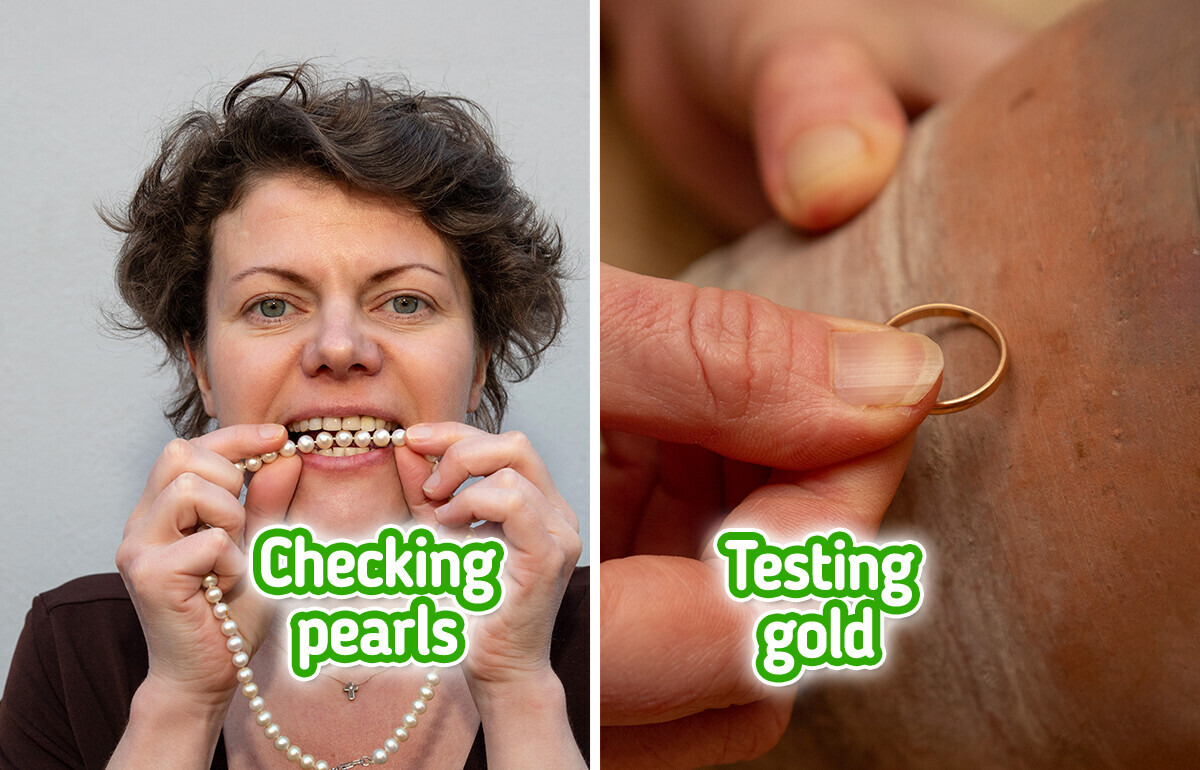
Sometimes we can buy jewelry not in specialized stores, but from someone directly or in consignment shops, and then we might start doubting whether the piece is genuine. The easiest way to dispel the doubts is to contact a professional jeweler. But if there is no such opportunity, you can try to check the piece at home. We decided to put together tips and tricks that will help you distinguish real jewelry from fake one.

There are several ways to identify a fake diamond without special equipment. Unfortunately, none of them gives a 100% guarantee, but a rough replica can be detected with their help. Firstly, these gemstones are characterized by enviable hardness, so a diamond can be scratched with a knife. If scratches appear on the surface, it means that the stone is not real.
Secondly, you should breathe on the jewel. Condensation doesn’t settle well on diamonds, and a genuine stone will quickly clear from the haze. A synthetic stone, on the other hand, will remain misted for longer.
The third method requires an enviable amount of courage. You need to heat the stone over an open flame and then drop it into ice water. The diamond is likely to stay as good as new, but the synthetic stone may crack. However, the temperature test can also spoil a real mineral, so it should be performed with caution.
You can put the jewel under a UV lamp. Real diamonds are believed to emit a fluorescent glow. However, this is not the most reliable test, as there are natural stones that don’t fluoresce.
Some experts advise taking the stone out of the setting and throwing it into a glass of water. This method is not very convenient, because you will still have to go to a jeweler (who at the same time will be able to check the authenticity of the stone). Besides, this test is not reliable: an artificial diamond, such as zirconium, is also heavy enough to sink to the bottom.
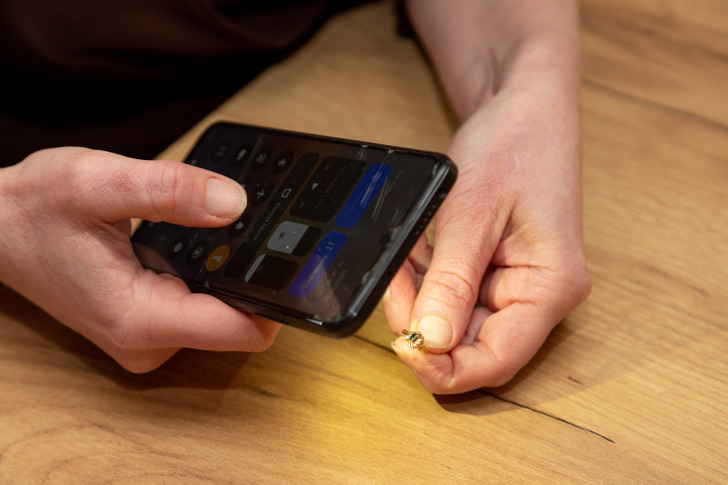
Real sapphires are almost identical in chemical composition and aesthetic qualities to those grown in laboratory conditions. However, the latter are cheaper and are less appreciated by connoisseurs. But it’s unlikely that someone want to buy a fake such as cubic zirconia, spinel, or glass, instead of a precious stone.
To distinguish a real sapphire from a cheap copy at home, you need to shine a flashlight on the stone. The light, passing through a sapphire, acquire only its color. If other shades appear in the reflection, it means that you are probably looking at a fake.
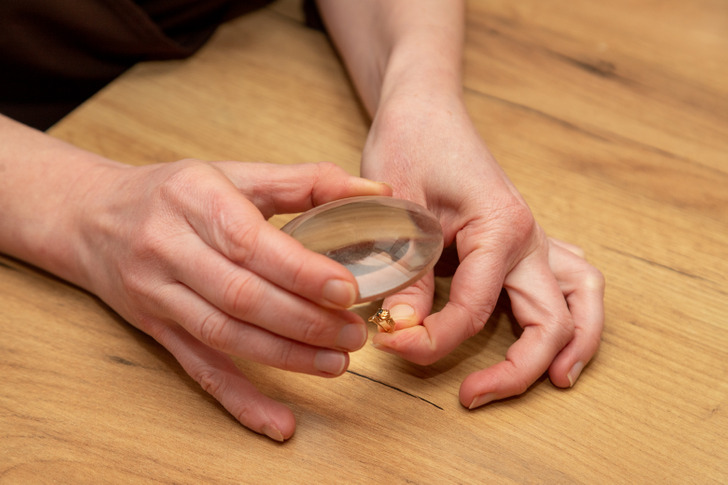
Another option is to examine the stone with a magnifying glass. In real sapphires, you may notice small imperfections and dark spots (“veils”), while artificial stones usually look flawless. Fakes, on the other hand, often have small air bubbles.
Since emeralds are expensive and very popular, some unscrupulous sellers replace them with chrysolites, garnets, and other cheaper stones. To distinguish a real emerald from a fake, you need to carefully examine the color of the jewel.
Genuine stones emit various shades of green — from dark to light, in some cases the color can be described as blue-green. But if there are yellow or brown tones in the stone, most likely it’s a cheaper mineral in front of you. In addition, you can bring the gem to a bright source of light: real emeralds almost don’t emit radiance. If the stone sparkles with all the colors of the rainbow, it is a fake.
In order to distinguish a real ruby from a fake (although many experts don’t include lab-grown stones), it is enough to simply swipe the gem on the glass. If a red streak remains on the surface, it means that it’s a cheap replica.
In addition, real rubies have a high degree of hardness, inferior only to diamond. Therefore, no irregularities or roughness should be visible on the stone, and it’s impossible to seriously damage the mineral with a knife or sandpaper.
Fake opals are often glued together from 2 layers, so you can verify the authenticity of the stone by carefully examining its side in bright light. If the surface shows a line, a thin seam or a change in the pattern, it means that the opal is not real.
In addition, fakes are usually thinner than real stones. It’s also worth looking at the base of the stone: the surface of a real opal is usually uneven and rough, as microscopic water droplets are formed during the formation of the mineral. Fake stones most often have a smooth and uniform base.
To distinguish a real stone from a copal or glass, it’s not necessary to poke a hot needle into it — this can damage the jewel, and even a small bump will spoil the appearance of the gemstone.
It is better to put the stone under a UV light. In this light, the real amber will appear bluish or yellowish. Glass or plastic will not change color at all, and the copal will turn white.
Natural nephrite and jadeite are rare and valuable minerals, which is why they are often counterfeited. To determine whether you are holding a genuine jewel or not, you should tap the stone against a metal object, like a coin. A genuine stone produces a clear, soft, tinkling sound reminiscent of a bell. A glass piece produces a heavier ringing sound, while a plastic piece sounds muffled.
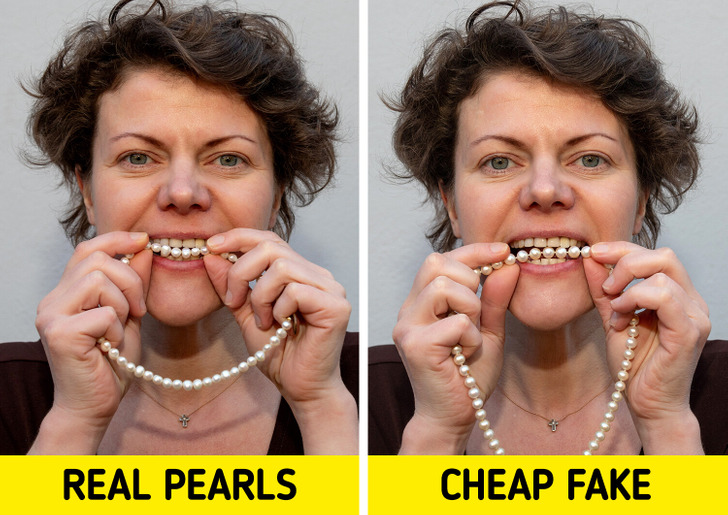
One of the easiest ways to tell the difference between a natural pearl and a cheap replica is to bite the jewel with your teeth. A genuine pearl has a roughness and texture similar to sandpaper, while a fake pearl is as smooth as glass.
If you don’t want to bite the pearls, you can rub them against your cheek. However, some fake items can’t be detected with the help of this test.

In addition, natural pearls absorb moisture well. If you breathe on it, a haze with light waves will form on the surface. A fake pearl, on the other hand, is likely to remain dry and completely clean. Real pearls are usually heterogeneous in color, have small imperfections and emit a deep luster. And the luster varies in different areas of the gem.
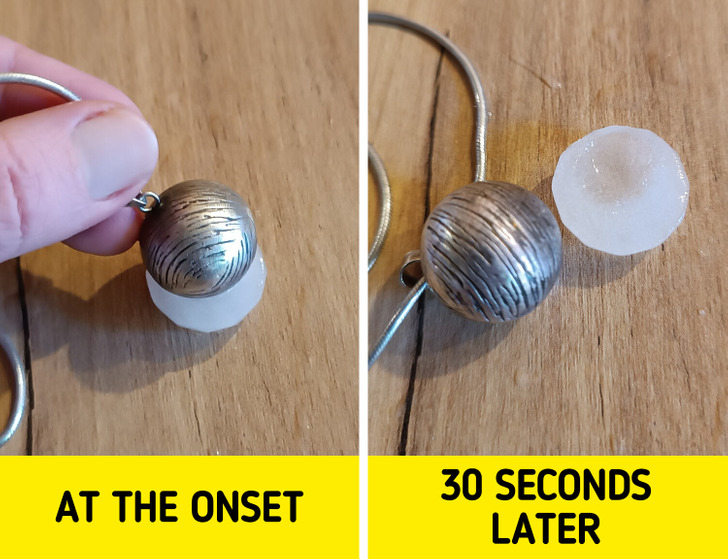
To distinguish a real silver piece from a fake one, just wipe it with a clean white cloth. If there are dark traces on the cloth, it means that you are looking at a piece of jewelry made of precious metal. This trick will work best with tarnished silver.
In addition, this metal has a very high thermal conductivity, so you should put a piece of ice on the chain or ring. Ice melts incredibly quickly on silver, even at room temperature.
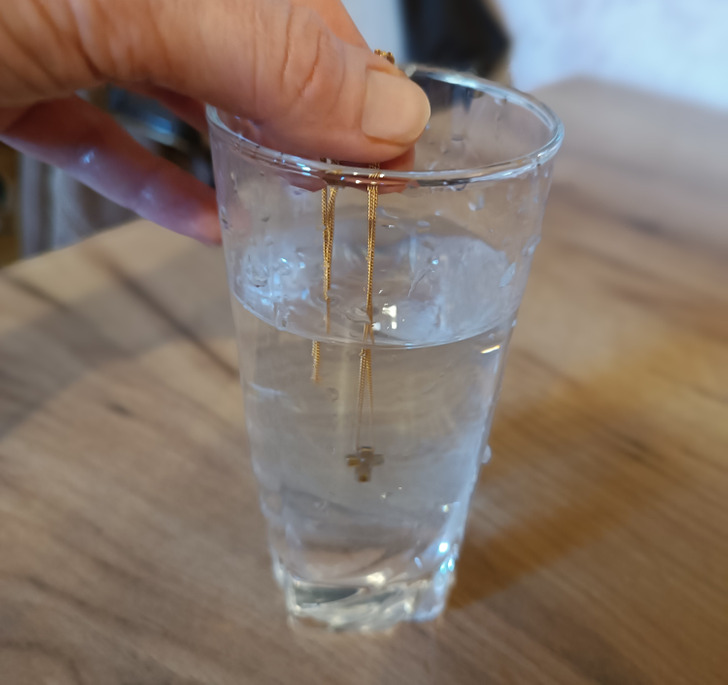
A real gold jewelry can be distinguished from a fake one with the help of a glass of water. This metal is very dense, so a piece of gold jewelry will sink immediately, whereas a fake can take some time to sink. Of course, some light chains may sink slowly, but rings and large pendants can be checked this way.
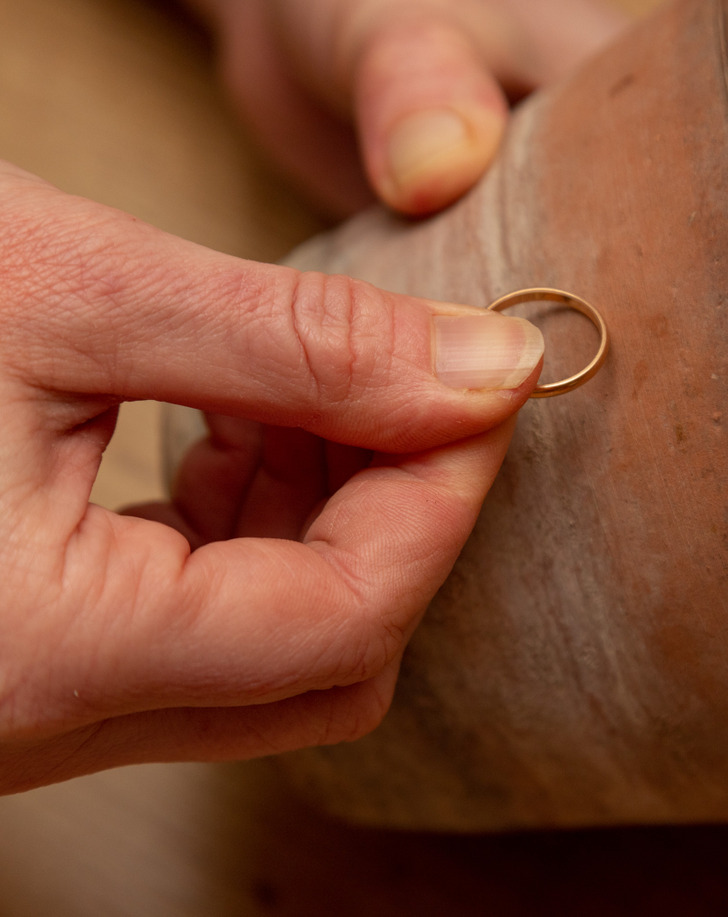
For the other method, you’ll need an unglazed ceramic surface. The back side of a tile is best. It is necessary to carefully scratch the tile with a gold piece. If there is a thin golden stripe on the surface, it means that the jewelry is genuine. But the trace of any other color should make you suspicious.
By the way, if a gold ring leaves a black stripe on the finger, it’s not a reason to worry. Gold, like silver, also oxidizes, but to a lesser extent. Depending on what cosmetics the wearer uses, this process can be intensified, resulting in dark marks on the skin.
And these jewelry trends can make you rethink your go-to pieces.











